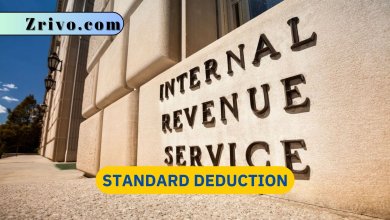Standard Deduction 2022

Contents
The standard deduction carries high importance for the majority of taxpayers. Almost nine out of ten taxpayers claimed the standard deduction instead of itemizing taxes in 2021, and analysts expect this will be higher for the upcoming tax season.
Whether you anticipate taking the standard deduction or itemizing taxes, the standard deduction amount will play a significant role in deciding. For example, if the standard deduction is increased to a higher amount than your itemized deductions combined compared to last year, it will indicate not to itemize anymore.
How much is the standard deduction for 2022?
The Internal Revenue Service announces the standard deduction right before the new year begins. At the time of writing this article, the IRS hasn’t announced it yet, but we have some estimates on how much it could be.
From 2018 to 2021, the standard deduction saw an increase of $200 for single filers and $300 for heads of households. Considering the financial impact of the COVID-19 crisis, we anticipate that this year’s increase will be slightly higher.
It may not be significant to some taxpayers, but we expect:
- A $300 increase for single filers ($600 for joint filers)
- A $400 increase for heads of households
While the above numbers aren’t finalized as it’s only our guesses, we’ll keep you updated as soon as the IRS announces the actual figures for the standard deduction.
Comparing standard deduction and itemized deductions
Since you will have two options to reduce taxable income, we can’t help but compare both. You can either take the standard deduction and be over with any other deductions – except for the above-the-line deductions, which are also known as adjustments – it’s not the same with itemized deductions.
Claim these adjustments by using Schedule 1. You can make adjustments to your income with the standard deduction as you’ll file Schedule 1 anyways to figure out adjusted gross income.
The standard deduction is an easy route for reducing taxable income while providing good value. It can get a bit complicated with the itemized deductions.
For tax purposes, specific expenses are tax-deductible. If you have enough of these expenses to write off using Schedule A, Itemized Deductions, and the total amount exceeds the standard deduction for your filing status, itemize. If not, don’t – it’s as simple as that.
The standard deduction for elderly and blind
While the standard deduction provides excellent value, it reduces taxable income even further if you’re over the age of 65 or legally blind.
If you’re legally blind for tax purposes, you get an additional $1,600 added on top of the standard deduction qualified.
The extra amount is $1,350 for those 65 and older.
If you’re filing a joint return, add the same amount for your spouse, and if you’re both 65 or older and legally blind, add both together. As a single individual, you can increase your standard deduction by up to $2,950. The amount is even higher if married and filing a joint return.
Although the added amounts aren’t likely to change for the 2022 tax season, there is a chance that it might happen. For the time being, an increase to the standard deduction for the elderly and blind as far as the extra amount goes isn’t considered by Congress.





